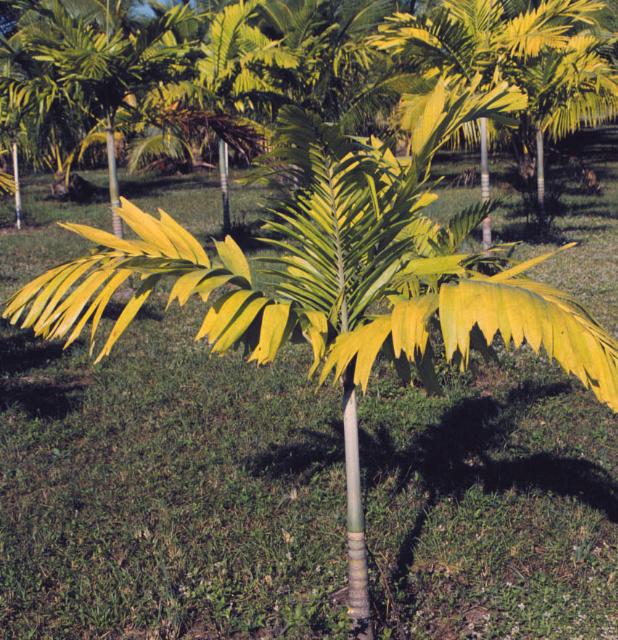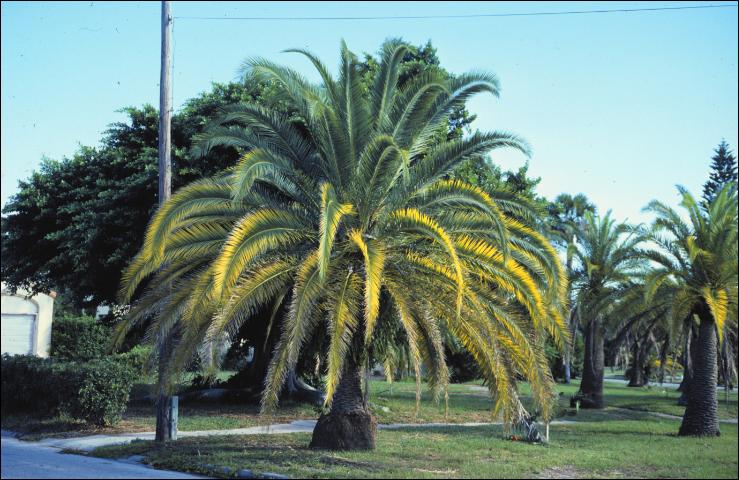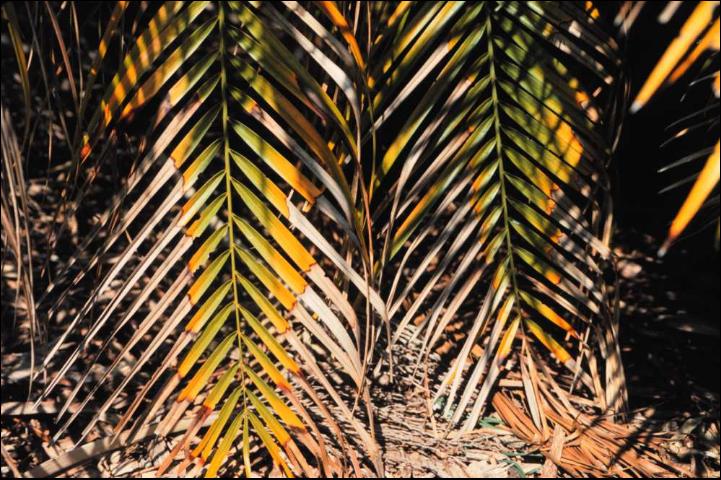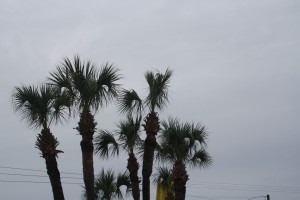Many people picture sugar sand beaches, emerald green water, and gorgeous palm trees swaying in the breeze when they think about visiting or moving to Florida. The panhandle offers the beautiful Gulf of Mexico and sugar sand beaches, but sometimes its palms look a bit deficient. Why is that and what will it take to correct this? Although it seems counter-intuitive, major improvements can result from providing less attention to the palms by reducing the amount of pruning.
Over pruning palms leads to nutrient deficiencies and increases the likelihood of insect and disease problems. Pictured at left is an example of over pruned palms. This technique leaves the heads looking spindly and unattractive, and also hurts the palm’s short-term and long-term health. So, why do property owners send someone up a ladder to harm their palms? Most likely a combination of misinformation and routine.
Palms should have a 360 degree canopy, for example if the top of your palm tree is a clock (with hands, not digital!) you would not prune any fronds above 3 and 9 o’clock. The palms pictured above are pruned in a range from 11-1 o’clock and 10-2 o’clock.
Why does it matter how many fronds are on the palm?
- First off, palms are not trees as many people believe, but instead are grasses. Palms have just one growing point that is located at the top of the trunk, and this one bud called the apical meristem is busy making fronds that will not appear until several months from now.
- When nutrients are not available in the soil it can take 4-6 months for a deficiency to show up, so palm nutrition is tricky. Although they grow differently than trees and shrubs, one commonality is that they produce food through photosynthesis and need all available green tissue to make this happen.
- When there are fewer fronds, the palm has limited resources to create energy.
Native Florida soils are not able to meet the specific nutrition needs of most palms, so it is common to see nutrient deficiencies. Some nutrients such as nitrogen, potassium, and magnesium are mobile in the plant. This means that they can be moved to areas with sufficient amounts of the nutrient to other parts of the palm that do not have enough. This will cause some partial discoloration in leaves, which can be misinterpreted as a dying leaf when in reality it is just sharing food with the rest of the palm. If that frond has any green tissue remaining and is cut off, then a great source of nutrients has just been removed thus making the overall deficiency even worse!
What about “hurricane-cut” to improve wind resistance?
- Another common myth is that making a “hurricane cut” will reduce the likelihood of trees breaking in storms. Observations after the hurricane seasons of 2004 and 2005 along with research by scientists have shown that the opposite is actually true. Trees that had been given a “hurricane-cut” were more likely to have their crowns snapped than palms with full crowns.
- Damaged or dead fronds should be removed before storms to prevent them from becoming airborne during a storm, but green leaves should remain on palms.
So, how do you know the difference between normal shedding of fronds and a deficiency?
- Normal shedding (senescence) is indicated by an overall discoloration of the whole frond, not just sections, and the whole process of turning color and falling off (or hanging down depending on the palm) only takes a couple of days.
- A gradual shift to yellowing, browning, abnormal growth or other similar symptoms are typically nutrition related.
-

Nitrogen deficiency. Photo credit: UF/IFAS
-

Magnesium deficiency. Photo credit: UF/IFAS
-

Potassium deficiency. Photo credit: UF/IFAS
Above are some examples of common nutrient deficiencies found in Florida landscapes. These are examples of leaves that are still supporting the palm and should be left attached to the tree until the whole frond is brown.
For more information on proper pruning and nutrient deficiencies of palms, please see the publications indicated below.
Nutrient Deficiencies of Landscape and Field-Grown Palms in Florida
Pruning Palms
- Thinking of Starting a Cut Flower Business? Don’t miss out on Cut Flower 101! - October 30, 2025
- 2025 Gardening in the Panhandle LIVE! Great Southeast Pollinator Census – Bee a Citizen Scientist! Wrap Up - September 18, 2025
- Will you Bee a Citizen Scientist? - August 15, 2025

